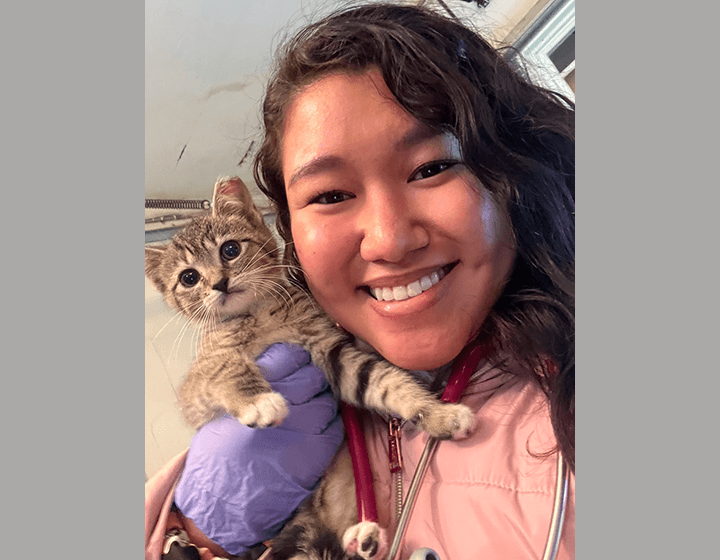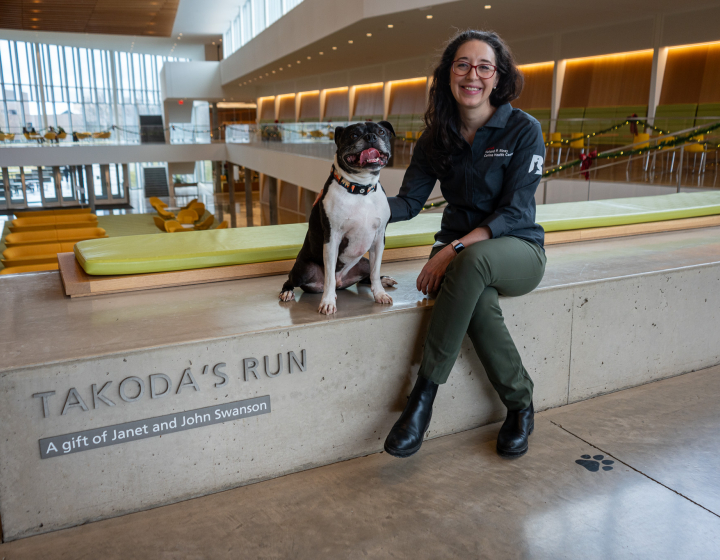Tiny red fox gets Big Red care
A tiny red fox kit is getting world-class care at Cornell University’s Janet L. Swanson Wildlife Hospital. The four-to-six-week old baby was first brought to a local rehabilitator after she was found in Cortland County with her paw caught in a plastic rat trap. Now, Cornell’s veterinarians, LVTs and students are helping to heal the fox’s swollen paw and get the baby back to full health.
Each day, the team weighs and assesses the youngster to ensure she’s growing and healing. They give her antiparasitic medication and feed her a diet of kitten food mixed with formula, checking her paw frequently to track the swelling and look out for any signs of infection.
“She’s fortunate that the trap was plastic,” says Dr. Cynthia Hopf-Dennis, instructor with the Section of Zoological Medicine. “Otherwise, her foot would likely have been broken.” The trap was set outside, and was likely very close to the fox’s den, as kits of her age do not travel far.
Every spring, the wildlife hospital sees an uptick in baby wild animals as females are giving birth, and new, inexperienced young ones begin to explore their surroundings.
According to the New York State Department of Environmental Conservation, red foxes mate for life, and can produce litters of 1 to 12 kits. While babies are born blind and helpless, they can hunt on their own by 12 weeks. As the most widely distributed carnivore in the world, red foxes live in nearly every county of New York State. They are also increasingly found in suburban areas, as coyote populations (a natural predator) have forced them from wilder habitats. This means that humans will have more frequent impacts on and encounters with foxes—something that the Cornell clinical team hopes people will be mindful of. “While we understand that people want to protect their homes against animal pests, rat traps should stay inside the house, if at all possible,” says Hopf-Dennis.
Once her paw is better, the kit will be raised by a wildlife rehabilitator with other rescued fox kits to ensure she is socialized with her own species, and if all goes well, she will be released back to the wild when she is old enough to survive on her own.
Please consider giving to the Janet L. Swanson Wildlife Hospital to support the care of wild animals like the red fox kit.
Written by Lauren Cahoon Roberts
Video by Darcy Rose





